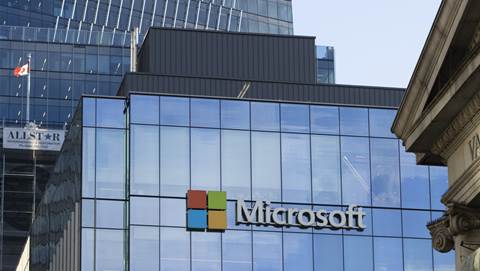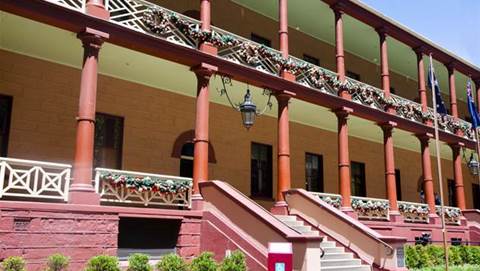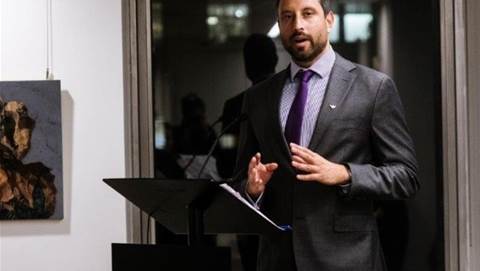Ripples of blockchain at Westpac

Westpac’s less public journey with blockchain so far has involved three proof of concepts in partnership with blockchain start-up Ripple.
The US company - whose software is built on distributed ledger technology - has a growing number of banks in its network of backers, including the big four locally.
In early 2015, Westpac trialled a Ripple-based solution as part of a proof of concept that aimed to improve the long and costly process customers need to undertake to transfer small payments to others overseas, Westpac Institutional Bank’s head of innovation and implementation Mike Baldwin said.
“[It’s] a really big problem in Australia: the ability for individuals to make small payments overseas quickly, at a low cost, and in a way that is fully compliant with our [regulatory] obligations,” he said.
“As banks we don’t really have great solutions for that.”
The bank set up three “nodes” - one in Australia, another in New Zealand and a third in Fiji - in partnership with IBM and Ripple on the Ripple ledger, and built a website for the bank’s employees participating in the PoC to register themselves for their transaction.
Participants were given a unique BSB and account number required to perform their transaction, after which they went back to their online banking account to initiate the payment.
“We could then match that at the back-end - identify the sender and recipient, filter it through our sanctions filter to make sure it’s fully compliant - and then we put it into that node in Australia on the Ripple network,” Baldwin said.
The bank's financial markets staff were engaged as “market makers” in the middle to conduct the foreign exchange, with the transaction then hitting the receiving node in either Fiji or NZ where the branch would distribute the funds.
The bank conducted around 45 payments on the production system, with the PoC proving the cash could consistently land in the recipient’s account the next day.
The project was also “really low cost” due to the use of domestic low-value clearing systems on both ends, Baldwin said.
Having proven the time and cost proof points it had set out to achieve, Baldwin’s team built a business case and won funding for the project.
But the team fell short of getting the system fully into production given the integration it would require with Westpac’s existing systems.
“We wanted to make it really simple for customers, we didn’t want to have two portals where they register here and pay there, we thought ‘let’s integrate it with our online banking’. [That’s] costly and time-consuming, and also complex,” Baldwin said.
“So that was a bit of a challenge, and because it took a long time, people started to question why no-one was on the Ripple network yet.”
The bank ended up abandoning the technology in favour of a direct connection to the Philippines through an API. It released the subsequent LitePay product this year, allowing payments of up to $3000 to be made to the Philippines for a $5 fee and at a much faster rate than traditional telegraphic transfers.
“So the first lesson is: if the distributed ledger is really only adding the value of a network, it’s probably not enough to get your business case over the line,” Baldwin said.
After its first proof of concept, Baldwin’s team turned its attention to small-value transfers made by businesses, which were experiencing the same problems as individuals in terms of cost and time headaches.
It decided to work with an overseas bank this time instead of a Westpac branch, and quickly came up against the legal agreements, processes, protocols and standards that would need to be in place.
“That was fine for a proof of concept with one bank. But if we contemplated doing that for a dozen or several dozen banks, independently all those bilaterals would be very costly and very complex - again it shoots the business case out of the water,” Baldwin said.
While the first proof of concept had proven the technical feasibility of using blockchain technology for overseas payments before it fell at other hurdles, Westpac’s third distributed ledger use case was “incredibly compelling”, Baldwin said.
The bank partnered with a dozen other financial institutions for a proof of concept that would allow payments to be sent overseas without a Nostro account (those held by a bank in a foreign currency within another bank, used to facilitate foreign exchange and trade transactions).
“If you’re going to send a payment to another bank and they’re going to distribute the funds for you, they have to get the value somehow,” Baldwin said.
The proof of concept saw the banks all set up wallets on the Ripple network, and using a few thousand dollars in XRP cryptocurrency provided by Ripple, send money successfully back and forth across the globe.
But banks “aren’t going to use cryptocurrency” as part of their normal operations, Baldwin said.
“It’s not backed by a Reserve Bank, it’s sort of an IOU, you’ve got to trust it,” he said.
“But imagine reserve banks all around the world - and they’re already starting to talk about it - creating digital currencies as opposed to cryptocurrencies, which means you put Australian dollars, US dollars, pounds and euros on a ledger, and we could all trade those around on the ledger without needing our Nostro accounts.
“So we’d free up huge amounts of liquidity all around the world; we have it on the ledger but it’s a small fraction of what we have out there today.
"And when you think about the reconciliation of settlements benefits of that in terms of the speed and time and effort, this is a really compelling proof of concept.”


_(5).jpg&h=140&w=231&c=1&s=0)

.png&h=140&w=231&c=1&s=0)




.png&w=100&c=1&s=0)

 iTnews Benchmark Security Awards 2025
iTnews Benchmark Security Awards 2025
 Digital Leadership Day Federal
Digital Leadership Day Federal
 Government Cyber Security Showcase Federal
Government Cyber Security Showcase Federal
 Government Innovation Showcase Federal
Government Innovation Showcase Federal
 Digital NSW 2025 Showcase
Digital NSW 2025 Showcase











_(1).jpg&h=140&w=231&c=1&s=0)



